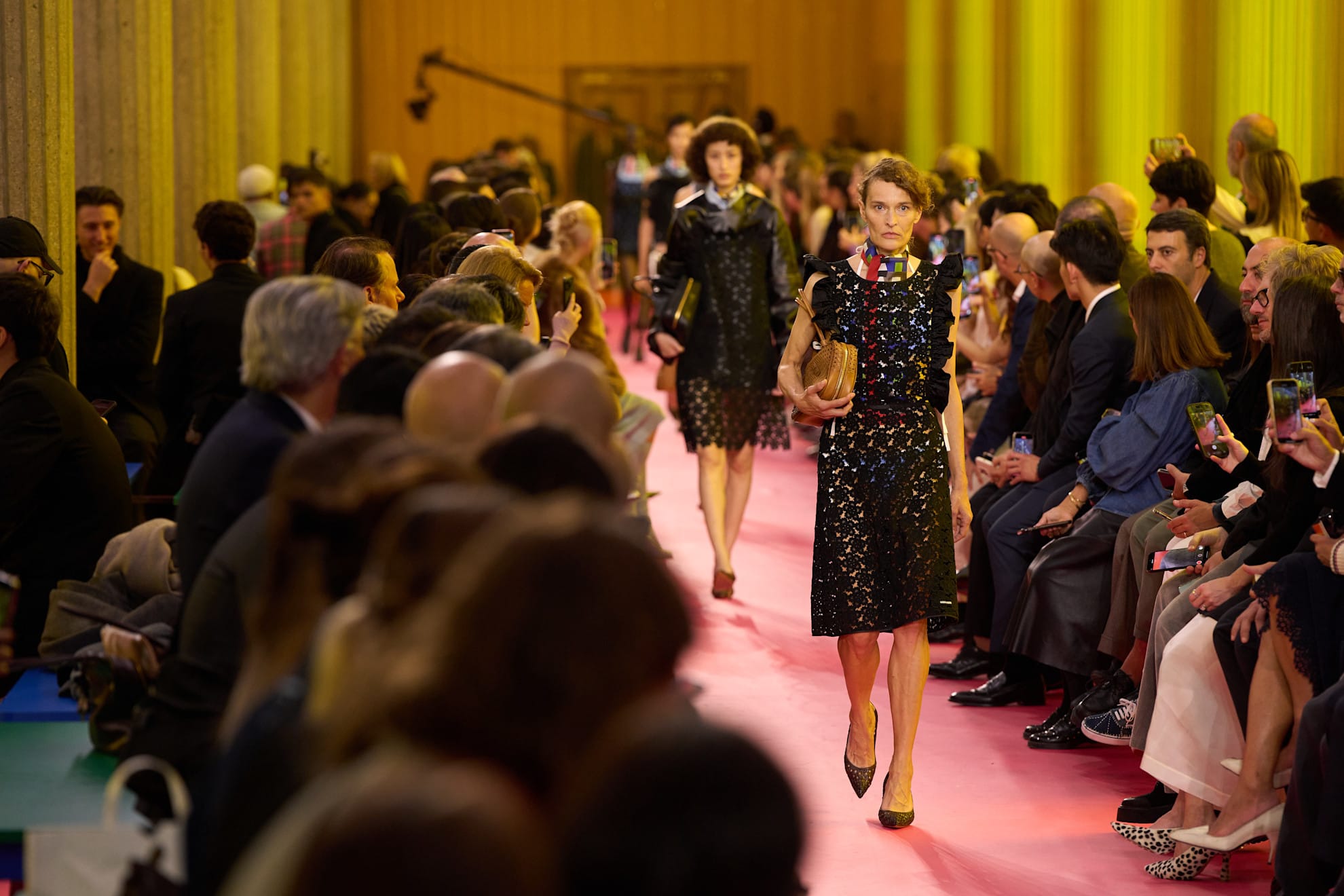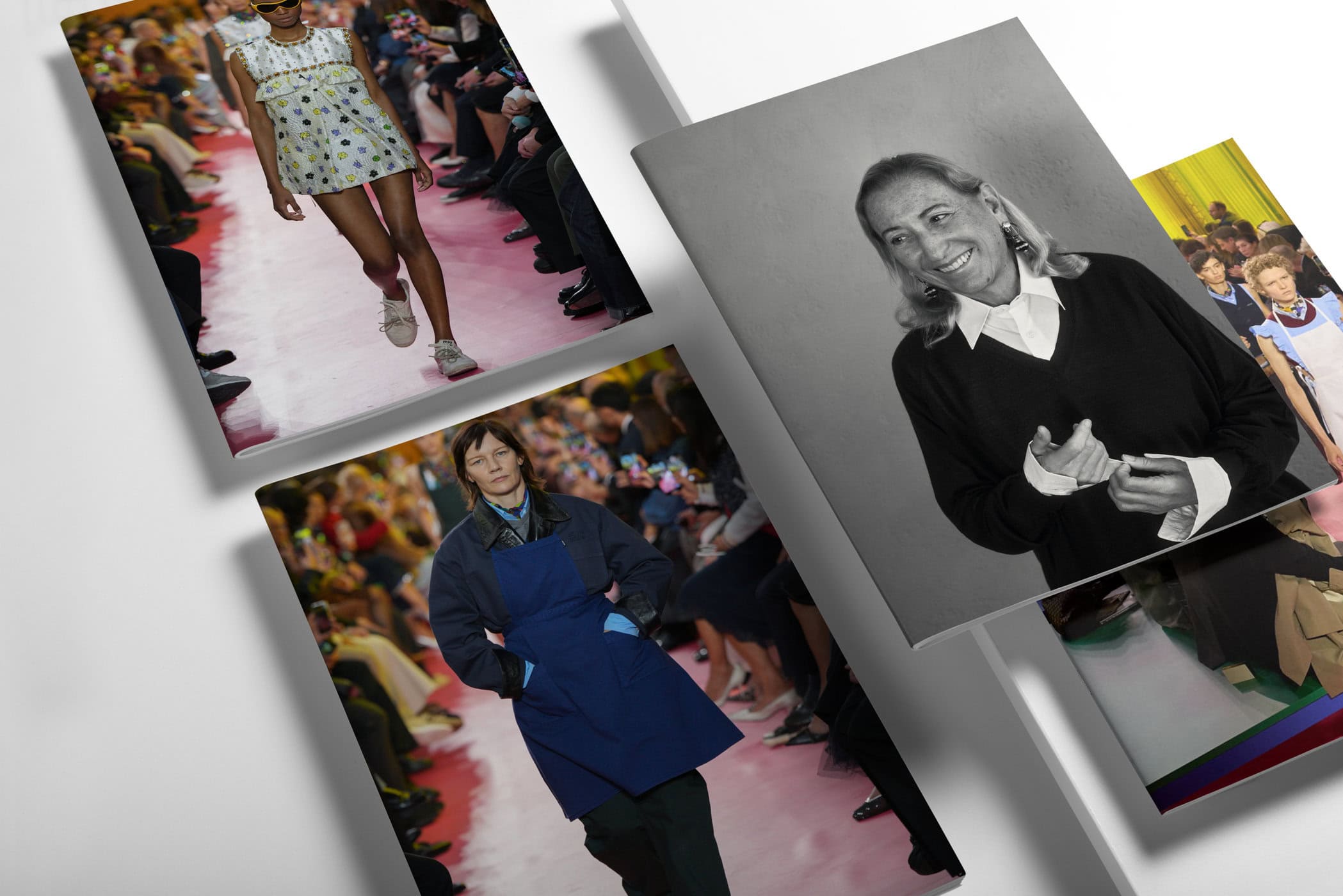With A Set Staged As A Vast Workroom, Prada Transformed Aprons Into Symbols Of Labor, Humility, And Women’s Strength
By Kenneth Richard
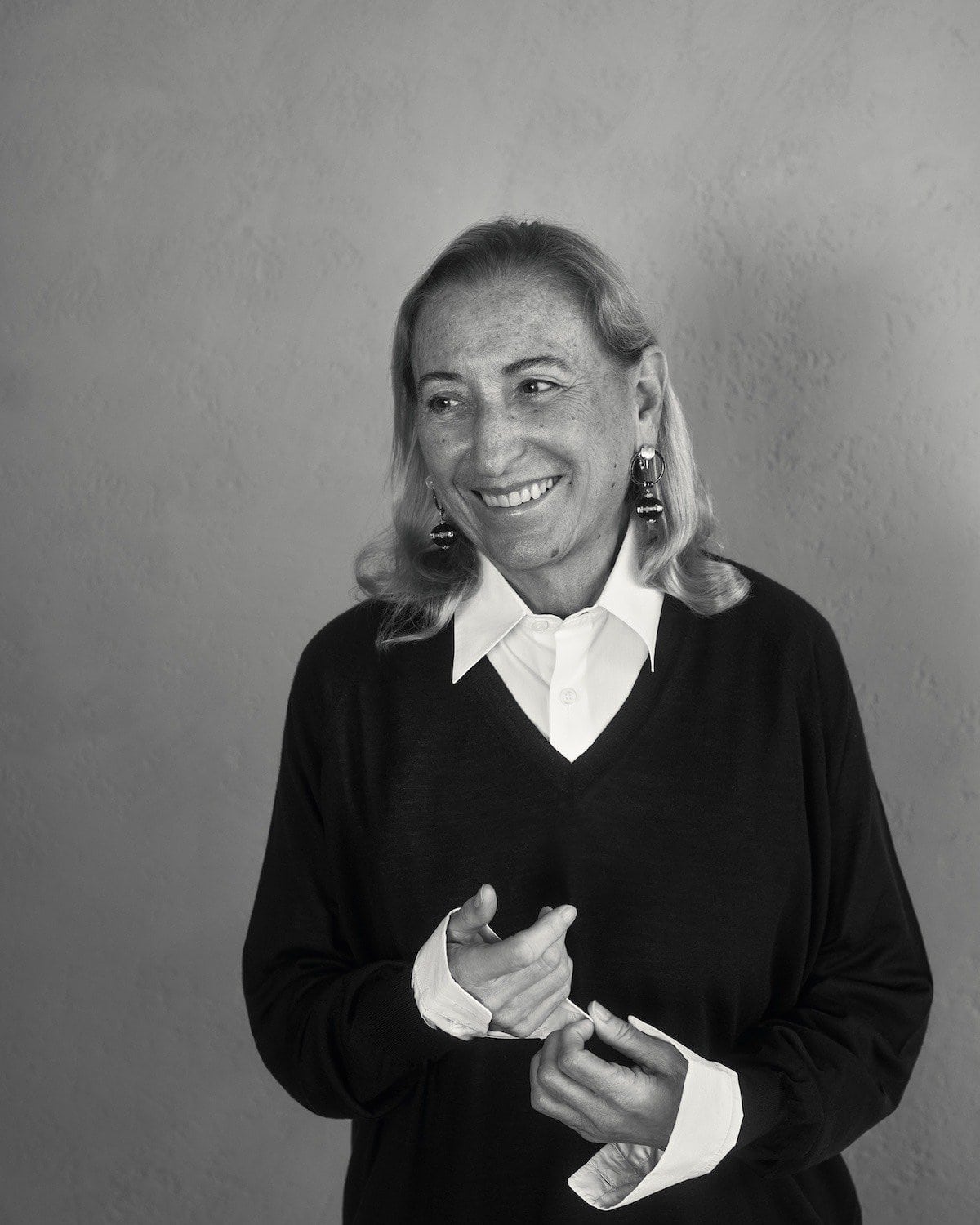
Backstage at Miu Miu, Miuccia Prada spoke softly, never raising her voice above the din of post-show chaos. Critics, celebrities, influencers, and artists had just taken their places at long, colorful tables — seated at the edges like schoolchildren, their legs dangling — as if they themselves were part of a workroom. The set was both playful and pointed: a reminder that behind every garment lies the invisible history of labor.
“I was afraid,” Prada confessed. “Because it was so much the opposite of what is going on. But I felt I had to. It was honest. It was authentic.”
That honesty materialized in the apron — a garment Prada read as layered with meanings.
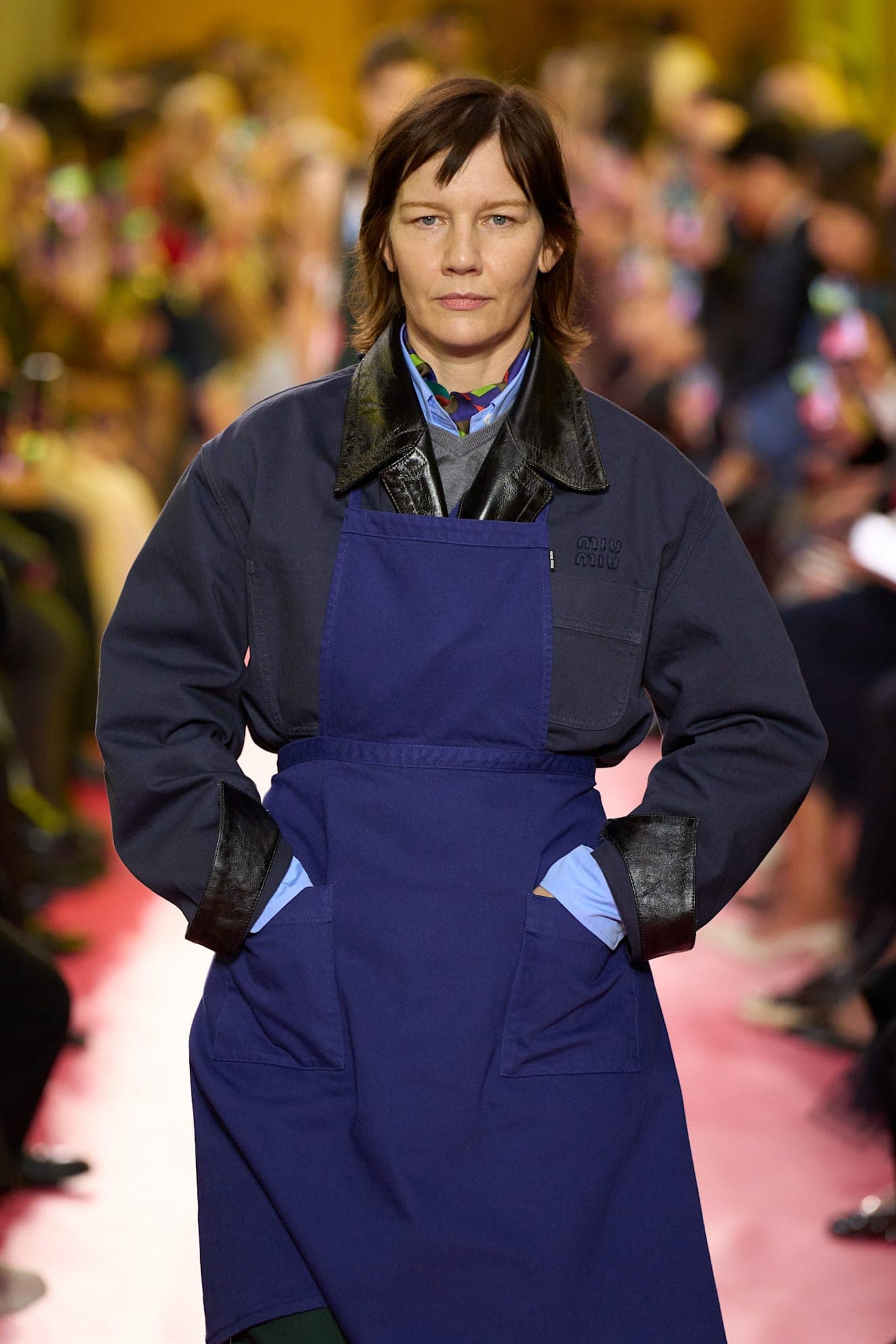
Not just servitude, but labor itself: the factory hand, the seamstress, the caretaker, the mother. “Apron is deeply rooted in our history,” she said. “It means you are working, which is already something. Between factories and homes, it contains humility… and power.”
On the runway, the apron became both symbol and silhouette. Hair was pulled into modest arrangements; fabrics were sturdy and lived-in; proportions nodded to uniforms and mothers’ clothing. “Yes, a kind of neo-realism,” Prada said, recalling postwar Italian cinema that dignified the everyday.
Fashion is sometimes too removed from reality. This was about reminding us.
Even the casting and guests sharpened that message. At the last moment, Prada invited Florentina Holzinger, the German provocateur whose performances scandalize with their honesty, and a Japanese musician whose work underpinned the show’s soundscape. Together they echoed Prada’s conviction that art matters most when it provokes through truth, not spectacle.
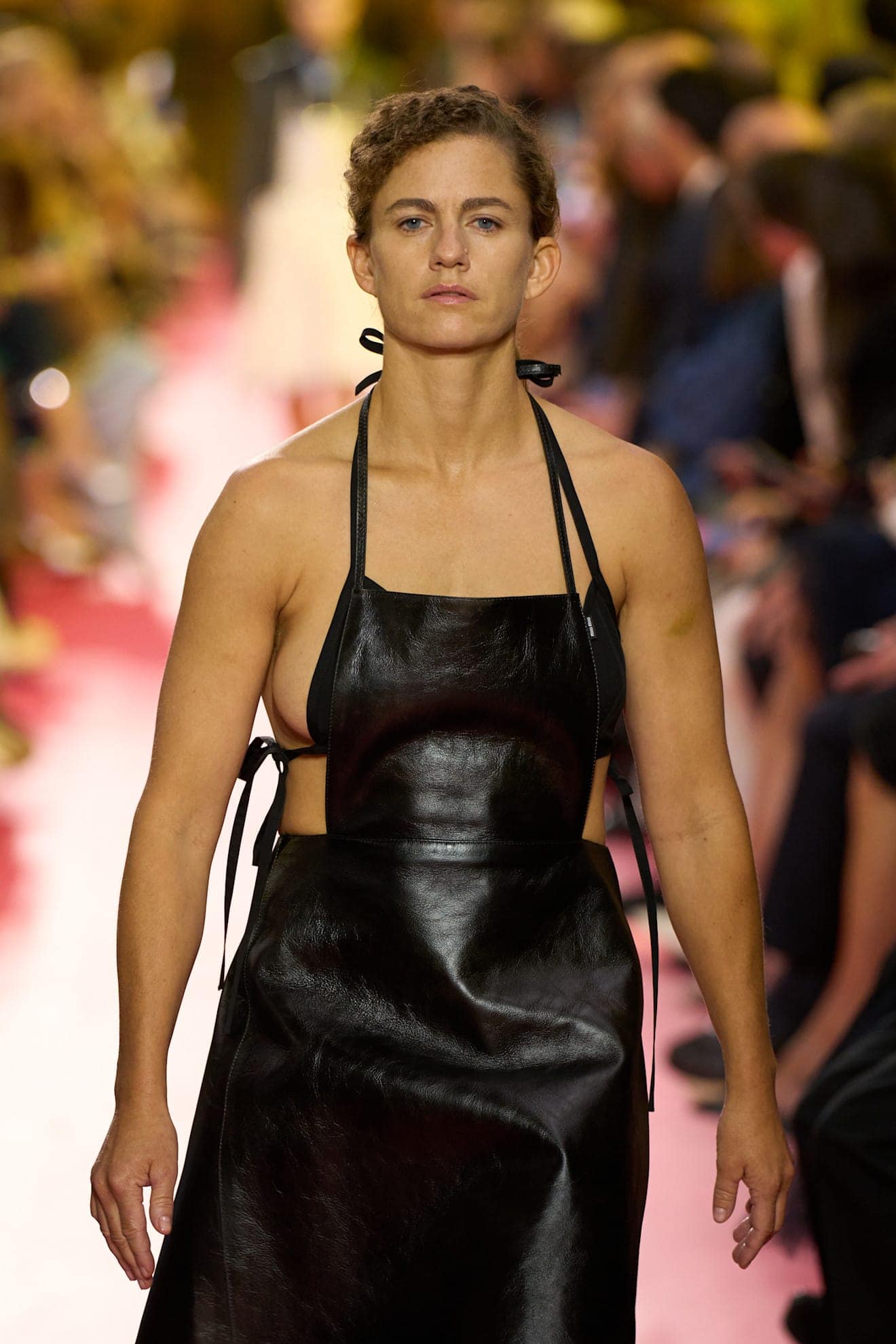
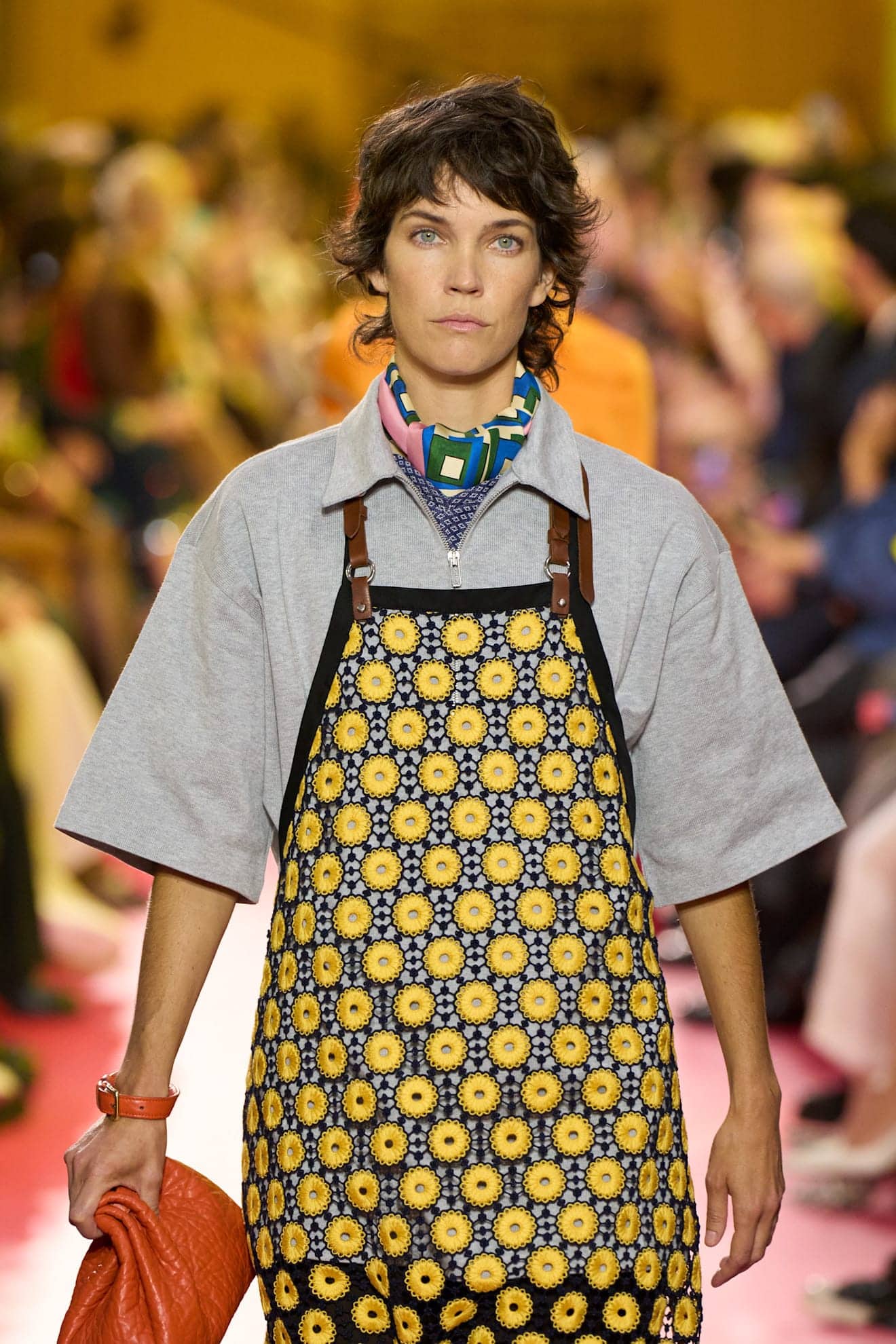
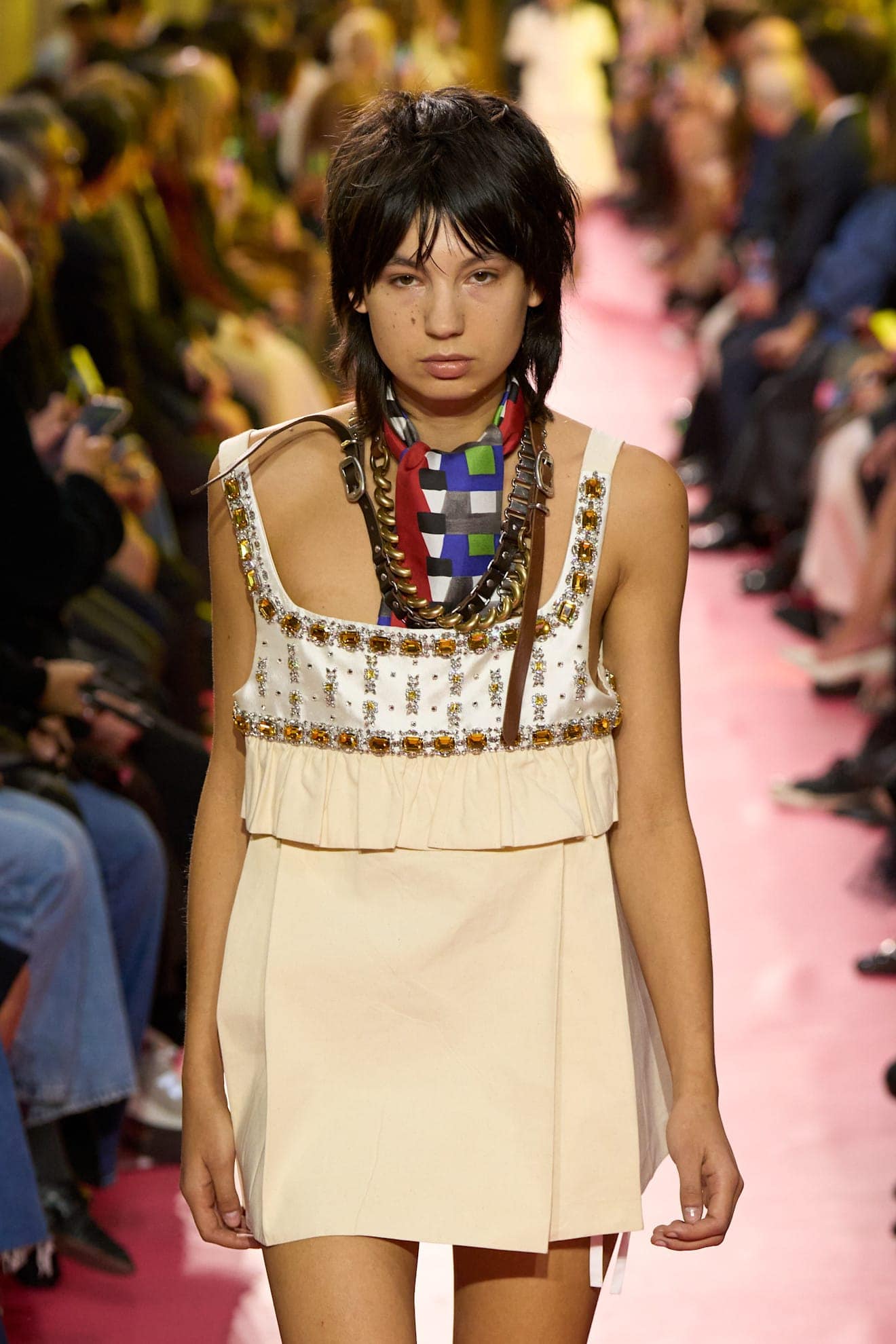
“I told all my passion in this show,” Prada admitted. “And I was really scared.”
Yet the fear felt electric. By reimagining the show space as a workroom, Miuccia Prada placed women’s labor — often unseen, often undervalued — at the very center of fashion’s most glamorous stage. The dangling legs at those long tables, the aprons reimagined as uniforms of strength, the softened hair and lived-in fabrics — all became part of a tableau that insisted on looking reality squarely in the face.
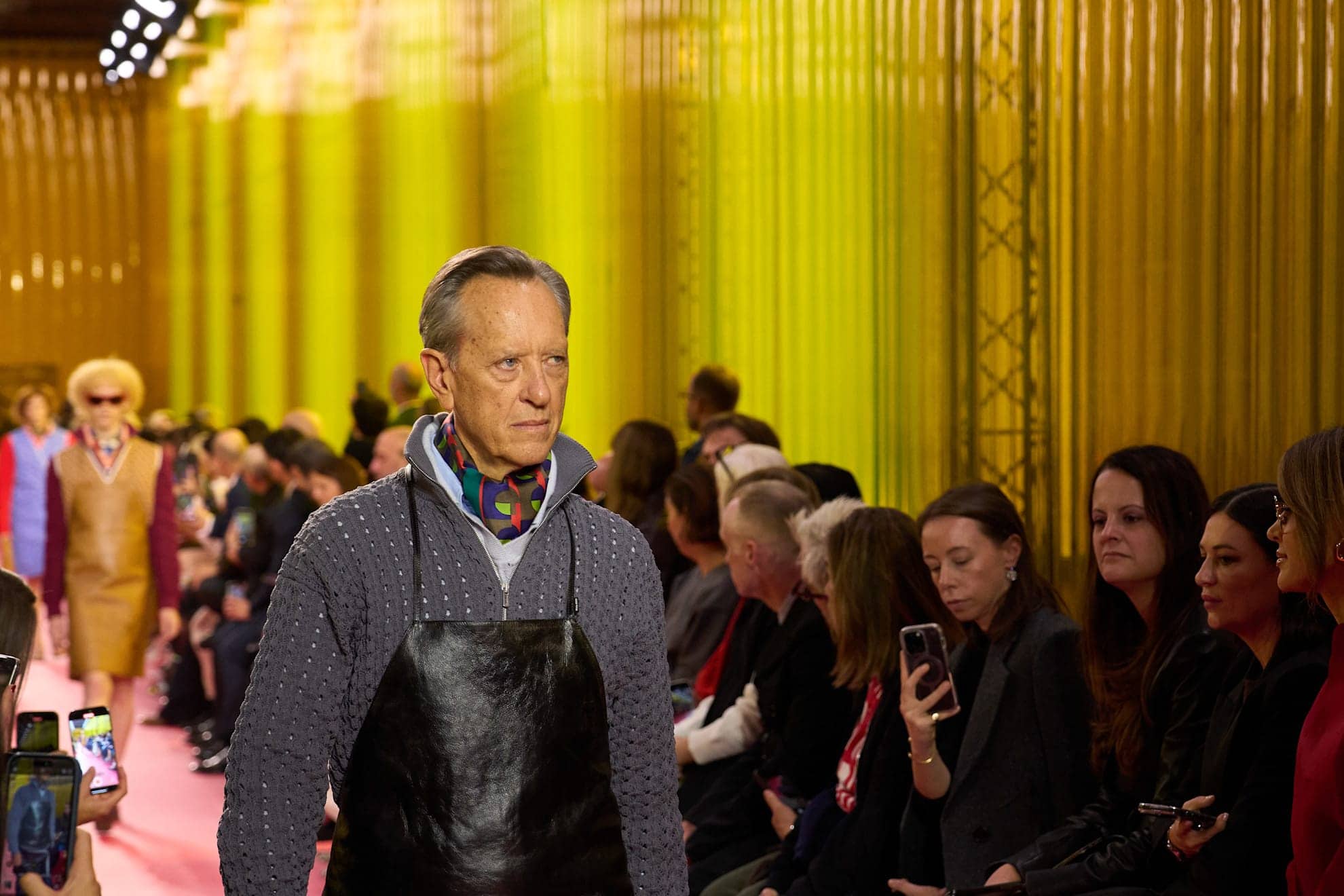
For Prada, the apron was not nostalgia, nor mere provocation. It was a radical banner for the present: a garment that carries centuries of care, endurance, servitude, and survival, now reframed as strength. That conviction was sharpened by her cast — from Sandra Hüller and Richard E. Grant to Milla Jovovich and Rila Fukushima — a gathering of actors, musicians, and artists whose presence mirrored the apron’s layered meanings. Together they embodied Prada’s belief that fashion matters most when it confronts reality with honesty and power.
And that was her message: that fashion need not escape reality to matter. Sometimes, by returning to it — with all its fragility, labor, and dignity — fashion can still shake us.
